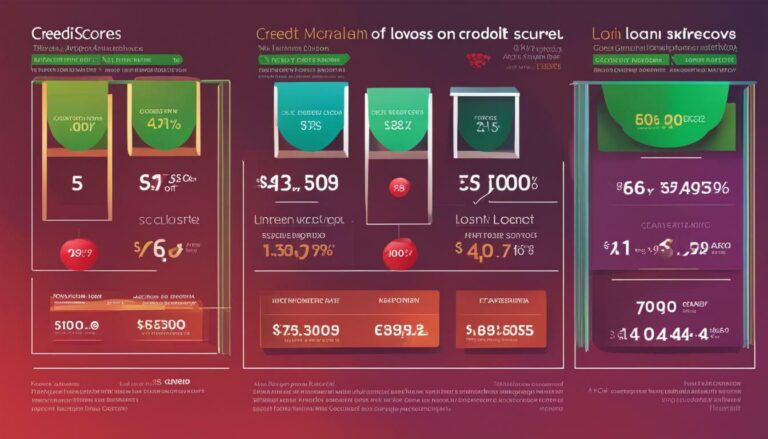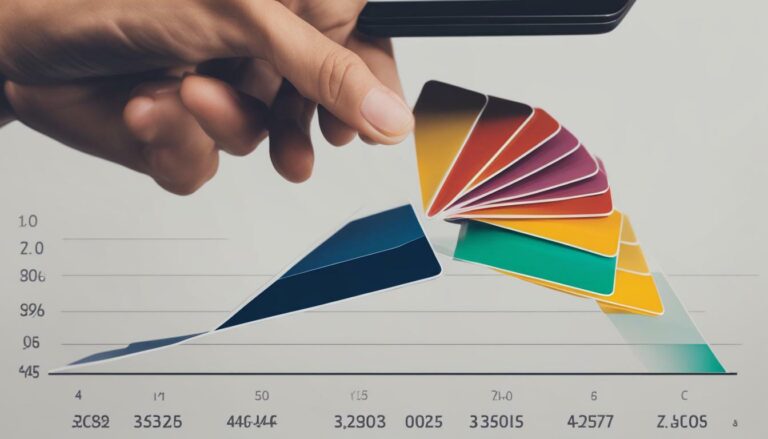Understanding Credit Utilization and Its Effect on Credit Scores

Credit utilization plays a significant role in determining your credit scores and understanding its impact is crucial for managing your credit effectively. Credit utilization refers to the amount of debt you owe compared to the total credit available to you, expressed as a percentage. This metric is considered by lenders and credit scoring models to assess your creditworthiness, making it an essential aspect of your financial health.
When it comes to credit scores, credit utilization is a critical factor that influences around 30% of your FICO score. It is recommended to keep your utilization below 30% to maintain a healthy credit score. Exceeding this recommended threshold can negatively impact your creditworthiness and make it more challenging to obtain favorable loan terms or secure new credit.
High credit utilization can signal to lenders that you may be living beyond your means or at a higher risk of defaulting on your debts. This can result in a lower credit score and hinder your ability to qualify for competitive interest rates or higher credit limits.
To improve your credit utilization and positively impact your credit scores, there are several strategies you can employ. One approach is to pay off balances on your credit cards, thereby reducing your overall debt and lowering your utilization ratio. Additionally, you can consider requesting a credit limit increase from your credit card issuer. This can help increase your available credit, effectively reducing your utilization ratio.
Another tactic is to spread your purchases across multiple credit cards. By diversifying your credit usage, you can keep individual utilization ratios lower and demonstrate responsible credit management. However, it is crucial to use this strategy with caution and ensure you can manage multiple credit cards responsibly.
🚨 TUIC Errors + Low Credit Score?
CreditScoreIQ helps you build credit faster by reporting utility bills to all 3 bureaus—while you dispute errors.
Start Building Credit Today →It’s important to note that even if you don’t use a credit card, keeping it open can have a positive impact on your credit utilization ratio. Closing accounts can decrease your available credit and may cause your utilization ratio to increase. Therefore, it’s advisable to keep unused credit cards open, especially if they have favorable terms or a long credit history.
Key Takeaways:
- Credit utilization refers to the amount of debt you owe compared to your total credit available.
- Maintaining a utilization ratio below 30% is recommended for a healthy credit score.
- High credit utilization can lower your credit score and make it difficult to obtain favorable loan terms.
- To improve credit utilization, consider paying off balances, requesting credit limit increases, and diversifying credit usage.
- Keeping unused credit cards open can help maintain a healthy utilization ratio.
Understanding and effectively managing credit utilization is key to maintaining a good credit score and being seen as a responsible borrower by lenders. By keeping your credit utilization low and utilizing strategies to improve it, you can enhance your financial reputation and gain greater control over your creditworthiness.
What is Credit Utilization?
Credit utilization refers to the amount of debt you owe compared to the total credit available to you, expressed as a percentage. It is an important factor in determining your creditworthiness and can have a significant impact on your credit scores. Understanding credit utilization is crucial for managing your credit effectively and maintaining a good credit score.
When you use a portion of your available credit, your credit utilization ratio increases. This ratio is calculated by dividing your total credit card balances by the total credit limit across all of your credit cards. For example, if you have a total credit limit of $10,000 and your current credit card balances amount to $3,000, your credit utilization ratio would be 30%.
| Utilization Ratio | Creditworthiness |
|---|---|
| 0-10% | Excellent |
| 11-30% | Good |
| 31-50% | Fair |
| 51-70% | Poor |
| 71% or higher | Very Poor |
Your credit utilization ratio is a significant factor in determining your credit scores. It accounts for 30% of your FICO score, one of the most commonly used credit scoring models. Maintaining a low credit utilization ratio, ideally below 30%, is generally recommended to maintain a healthy credit score. Higher credit utilization can indicate that you are using a large portion of your available credit, which can be seen as a potential risk to lenders.
To improve your credit utilization ratio, you can take steps such as paying off balances to reduce your debt or requesting a credit limit increase. Spreading your purchases across multiple credit cards can also help lower your overall credit utilization. It’s important to keep in mind that closing credit card accounts can increase your credit utilization ratio, so it’s generally advisable to keep unused credit cards open.

Let’s say you have three credit cards:
– Card A with a credit limit of $2,000 and a balance of $500
– Card B with a credit limit of $5,000 and a balance of $1,500
– Card C with a credit limit of $3,000 and a balance of $800To calculate your total credit utilization ratio, you add up the balances ($500 + $1,500 + $800 = $2,800) and divide it by the total credit limit ($2,000 + $5,000 + $3,000 = $10,000).
Your total credit utilization ratio would be 28%.
The Impact of Credit Utilization on Credit Scores
Your credit utilization has a direct impact on your credit scores, making it essential to understand how it affects them. Credit utilization refers to the amount of debt you owe compared to the total credit available to you, and it is expressed as a percentage. This factor is an important component of your FICO score, accounting for 30% of it. By maintaining a low credit utilization ratio, you can improve your creditworthiness and increase your chances of being approved for loans and other forms of credit.
High credit utilization can be seen as a red flag by lenders, as it suggests that you are relying heavily on credit and may be living beyond your means. This can negatively impact your credit score and make it more difficult to secure favorable terms for future credit applications. It is recommended to keep your credit utilization below 30% to maintain a healthy score. For example, if you have a credit card with a $10,000 credit limit, it is advisable to keep your outstanding balance below $3,000.
Managing your credit utilization is crucial for maintaining a good credit score and being seen as a responsible borrower by lenders.
To improve your credit utilization, consider implementing the following strategies:
- Paying off balances: By consistently paying off your credit card balances in full or reducing them significantly, you can lower your credit utilization ratio and improve your credit score.
- Requesting a credit limit increase: Contact your credit card issuer and inquire about the possibility of increasing your credit limit. This can help lower your credit utilization ratio, as long as you don’t increase your spending along with it.
- Spreading purchases across multiple cards: If you have multiple credit cards, consider distributing your purchases among them. This can help reduce the credit utilization ratio on each individual card, as well as your overall credit utilization.
Additionally, it is important to keep your unused credit cards open to maintain a healthy credit utilization ratio. Closing accounts can decrease your available credit, which in turn can increase your credit utilization ratio. By keeping these cards open, you can preserve your available credit and potentially improve your credit score.
| Credit Utilization Ratio | Credit Score Impact |
|---|---|
| 0%-10% | Positive impact; demonstrates responsible credit management |
| 11%-30% | Neutral impact; considered acceptable but could be improved |
| 31%-50% | Negative impact; may indicate credit risk |
| 51% or higher | Significant negative impact; indicates high credit risk |
By understanding the importance of credit utilization and implementing strategies to manage it effectively, you can maintain a healthy credit score and enhance your overall financial well-being. Regularly monitoring your credit utilization and taking steps to keep it low can position you as a responsible borrower in the eyes of lenders.

Keeping your credit utilization ratio at a healthy level is key to maintaining a good credit score and being seen as a responsible borrower. Credit utilization refers to the amount of debt you owe compared to the total credit available to you. It is expressed as a percentage and accounts for 30% of your FICO score, making it a crucial factor in determining your creditworthiness.
To maximize your credit scores, it is recommended to keep your credit utilization below 30%. This means that if you have a total credit limit of $10,000, you should aim to keep your outstanding balances below $3,000. High credit utilization can indicate that you are living beyond your means and can negatively impact your credit score.
There are several strategies you can employ to manage and improve your credit utilization. One effective approach is to pay off balances on your credit cards. By reducing the amount of debt you owe, you can lower your overall credit utilization ratio and improve your credit score. It’s important to prioritize your debts and tackle high-interest balances first to make the most significant impact on your utilization.
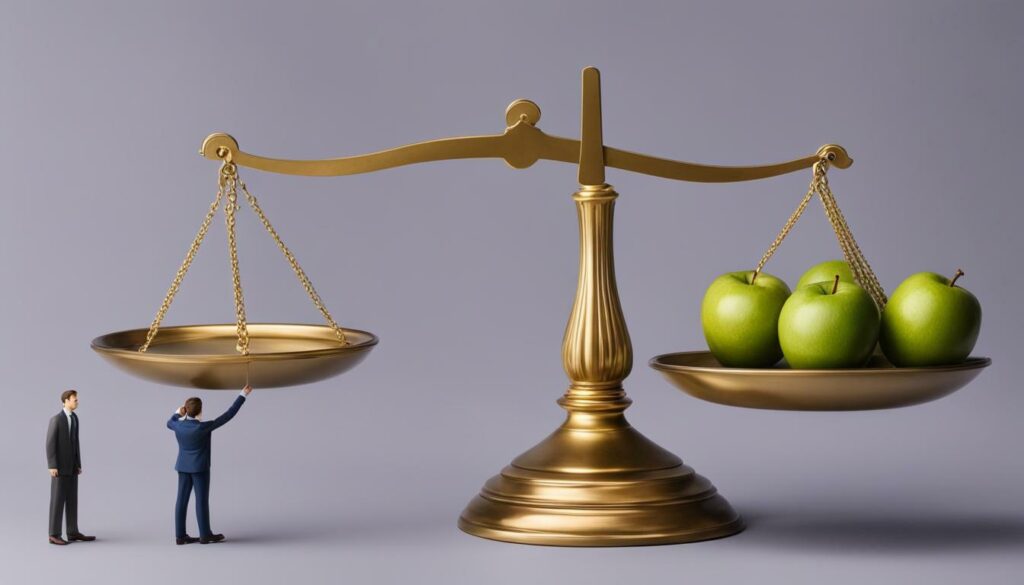
Another option is to request a credit limit increase on your existing credit cards. By increasing your credit limit, you can effectively lower your credit utilization ratio, as long as you don’t increase your spending. However, it’s essential to use this strategy judiciously and not be tempted to rack up more debt with a higher credit limit.
Paying Off Balances to Improve Credit Utilization
One effective way to improve your credit utilization is by paying off balances and reducing your overall debt. Credit utilization refers to the percentage of your available credit that you are currently using, and it plays a significant role in determining your creditworthiness. The lower your credit utilization ratio, the better it is for your credit score.
When you carry high balances on your credit cards or have a lot of outstanding debt, it can negatively impact your credit utilization ratio. By paying off balances, you can bring down your credit utilization and improve your credit score. It’s a good idea to prioritize paying off the credit cards with the highest interest rates or the ones that you owe the most on.
To track your progress and stay motivated, you can create a debt payoff plan. List all your debt, including credit cards, loans, and other outstanding balances. Then, prioritize which ones you want to pay off first. Consider using the snowball or avalanche method, where you either start with the smallest balance or the highest interest rate debt. As you pay off each balance, you will free up more available credit, which will lower your credit utilization ratio and potentially improve your credit score.
To summarize, paying off balances is an effective strategy for improving your credit utilization. By reducing your overall debt and maintaining low credit card balances, you can achieve a healthier credit utilization ratio and increase your chances of being seen as a responsible borrower by lenders.

| Debt Type | Outstanding Balance | Interest Rate |
|---|---|---|
| Credit Card A | $5,000 | 18% |
| Credit Card B | $3,000 | 22% |
| Student Loan | $15,000 | 4% |
Requesting a Credit Limit Increase
If you’re struggling with high credit utilization, requesting a credit limit increase can be a strategic move to improve your ratio. By increasing your credit limit, you can effectively lower your utilization percentage without having to pay off existing balances. This option can be particularly beneficial if you have a good credit history and a strong relationship with your credit card issuer.
To request a credit limit increase, start by contacting your credit card company either through their customer service hotline or by logging into your online account. Be prepared to provide information about your income, employment, and any other relevant financial factors that may support your request. Remember that the goal is to demonstrate your ability to manage larger credit limits responsibly.
Once your request is approved, it’s important to be cautious with your newfound credit limit. While having more credit available to you can help lower your utilization, it’s crucial not to fall into the trap of overspending. Continually monitoring your credit utilization and practicing responsible spending habits will ensure that you can maintain a healthy credit utilization ratio in the long run.
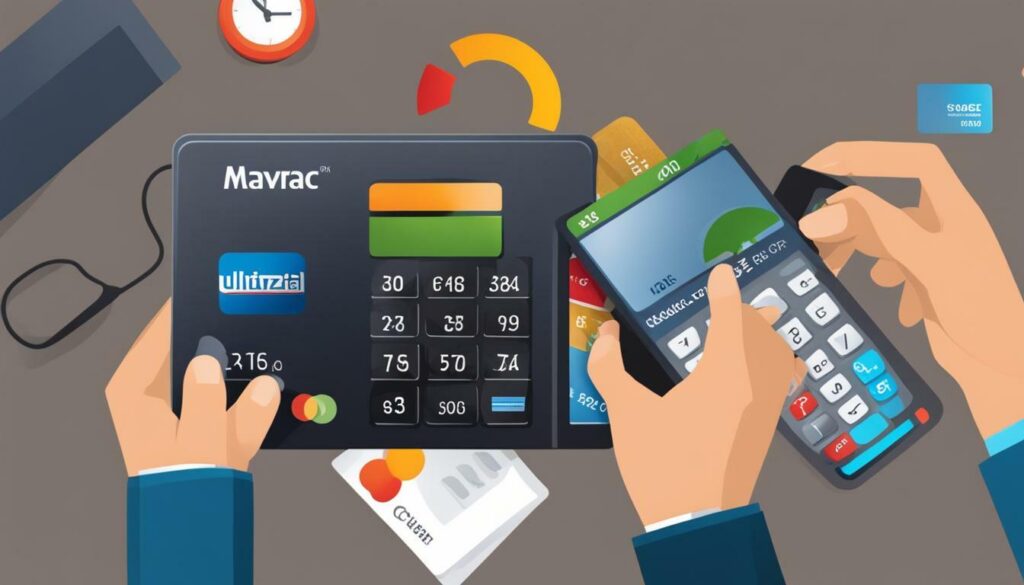
| Pros | Cons |
|---|---|
| Lower credit utilization ratio | Potential impact on credit score if a hard inquiry is required |
| Increased credit availability for emergencies | Temptation to overspend and accumulate more debt |
| Improved creditworthiness in the eyes of lenders | Possible impact on average age of accounts if a new credit card is opened |
While requesting a credit limit increase can have its advantages, it’s important to consider the potential drawbacks as well. A hard inquiry may be required, which could temporarily lower your credit score. Additionally, having access to a higher credit limit may tempt you to overspend and accumulate more debt if you’re not careful.
Before making a decision, weigh the pros and cons of requesting a credit limit increase in your specific financial situation. If you choose to move forward, remember to use your increased credit responsibly and continue to monitor your credit utilization to maintain a healthy ratio.
Spreading Purchases Across Multiple Cards
An effective strategy to lower your credit utilization is by spreading purchases across multiple credit cards. By diversifying your credit usage, you can reduce the amount of debt on each individual card and lower your overall utilization ratio. This can have a positive impact on your credit score and demonstrate responsible financial management to lenders.
When using multiple credit cards, it’s important to keep track of your spending and ensure that you can comfortably manage the payments. Here are some tips to effectively spread your purchases across multiple cards:
- Create a budget to determine how much you can allocate to each card.
- Choose cards with favorable terms and rewards that suit your spending habits.
- Use different cards for specific categories of expenses, such as groceries, gas, or dining out.
- Regularly monitor your credit card statements and make timely payments to avoid accruing excessive interest.
Remember, the goal is to maintain a low credit utilization ratio on each card while still meeting your financial obligations. By strategically spreading your purchases across multiple cards, you can effectively manage your credit utilization and improve your overall credit score.

It’s important to keep credit cards open, even if you don’t use them, to maintain a healthy credit utilization ratio. Closing accounts can actually increase your credit utilization, which can have a negative impact on your credit score. By keeping unused credit cards open, you are demonstrating to lenders that you have access to credit but are responsible enough not to use it excessively. This can be viewed as a positive attribute and can help improve your overall creditworthiness.
Unused credit cards also contribute to your total available credit, which is an important factor in calculating your credit utilization ratio. The more credit you have available, the lower your utilization ratio will be, assuming your outstanding balances remain the same. This is why it’s beneficial to keep your credit cards open, even if you don’t plan on using them regularly. By doing so, you are increasing the credit options available to you and keeping your utilization ratio in check.
Additionally, closing unused credit cards can also have a negative impact on the length of your credit history, which is another important factor in determining your credit score. The longer you have had credit accounts open and in good standing, the better it is for your credit score. By closing accounts, you are essentially shortening your credit history and potentially lowering your credit score as a result.
“Keeping unused credit cards open demonstrates to lenders that you have access to credit but are responsible enough not to use it excessively.”
In summary, keeping unused credit cards open is an essential part of managing your credit utilization and maintaining a healthy credit score. By doing so, you are showing lenders that you have access to credit but are not relying on it excessively. This can improve your creditworthiness and increase your chances of obtaining favorable loan terms in the future. Remember, managing your credit responsibly and keeping your credit utilization ratio low are key to financial success.
| Credit Utilization Tips |
|---|
| Pay off balances to reduce credit utilization. |
| Request a credit limit increase to lower your utilization ratio. |
| Spread purchases across multiple credit cards to diversify your credit usage. |
| Keep unused credit cards open to maintain a healthy credit utilization ratio. |
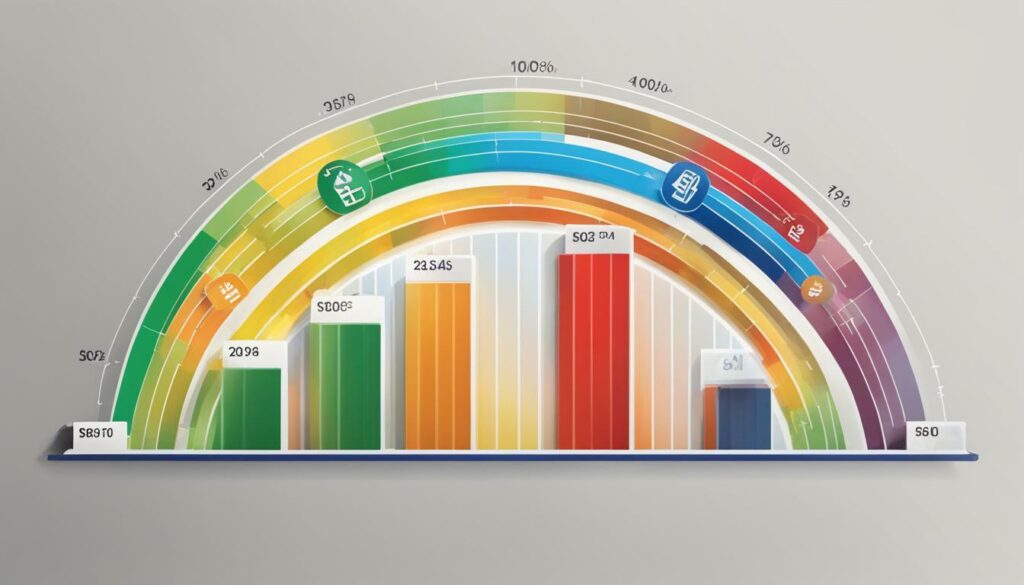
Understanding credit utilization and its effect on credit scores is essential for maintaining a healthy financial profile and making informed borrowing choices. Credit utilization refers to the amount of debt you owe compared to the total credit available to you, expressed as a percentage. It accounts for 30% of your FICO score and is a key factor in determining your creditworthiness.
To maintain a healthy credit score, it is recommended to keep your credit utilization below 30%. High credit utilization can indicate that you are living beyond your means and can lower your credit score. It is important to manage your credit utilization effectively to improve your financial health.
There are several strategies you can employ to improve your credit utilization. Firstly, paying off balances can help lower your utilization ratio. By prioritizing and tackling debt, you can reduce the amount of debt you owe, which in turn improves your credit utilization.
Secondly, requesting a credit limit increase can also help improve your credit utilization. By increasing your overall credit limit, you will have more credit available to you, which can lower your utilization ratio.
Lastly, spreading purchases across multiple credit cards can also help lower your credit utilization. By diversifying your credit usage, you can distribute your debt and keep your utilization ratio in check.
It’s also important to keep your credit cards open, even if you don’t use them. Closing accounts can increase your credit utilization ratio, as it reduces the total credit available to you. By keeping your accounts open, you maintain a higher credit limit, helping to keep your utilization ratio low.
In conclusion, understanding and effectively managing your credit utilization is crucial for maintaining a good credit score and being seen as a responsible borrower by lenders. By keeping your credit utilization below 30% and employing strategies like paying off balances and spreading purchases, you can improve your financial health and achieve your borrowing goals.
FAQ
What is credit utilization?
Credit utilization refers to the amount of debt you owe compared to the total credit available to you, expressed as a percentage.
How does credit utilization affect credit scores?
Credit utilization accounts for 30% of your FICO score and is a key factor in determining your creditworthiness. High credit utilization can lower your credit score.
Why is credit utilization important?
Credit utilization is important for managing your credit effectively and maintaining a healthy credit score. It reflects your ability to manage credit responsibly and live within your means.
How can I maintain a healthy credit utilization ratio?
To maintain a healthy credit utilization ratio, it is recommended to keep your utilization below 30%. You can achieve this by paying off balances, requesting a credit limit increase, or spreading purchases across multiple cards.
How can I improve credit utilization through paying off balances?
Paying off balances can help improve credit utilization. It is important to prioritize and tackle debt to lower your credit utilization ratio.
Should I request a credit limit increase to improve credit utilization?
Requesting a credit limit increase can be a strategy to improve credit utilization. A higher credit limit can help lower your utilization ratio, as long as you continue to manage your debt responsibly.
Is spreading purchases across multiple cards a good way to lower credit utilization?
Spreading purchases across multiple credit cards can be an effective way to lower credit utilization. By diversifying your credit usage, you can reduce the impact of high balances on a single card.
Why is it important to keep unused credit cards open?
Keeping unused credit cards open is important for maintaining a healthy credit utilization ratio. Closing accounts can increase your credit utilization and potentially have a negative impact on your credit score.
Ready to Improve Your Credit?
Disputing TUIC errors is step one. Step two? Boost your score by reporting utility payments with CreditScoreIQ.
Get Started Now (Only $1 Trial) →3-bureau reporting • $1M identity insurance • Dark web monitoring


